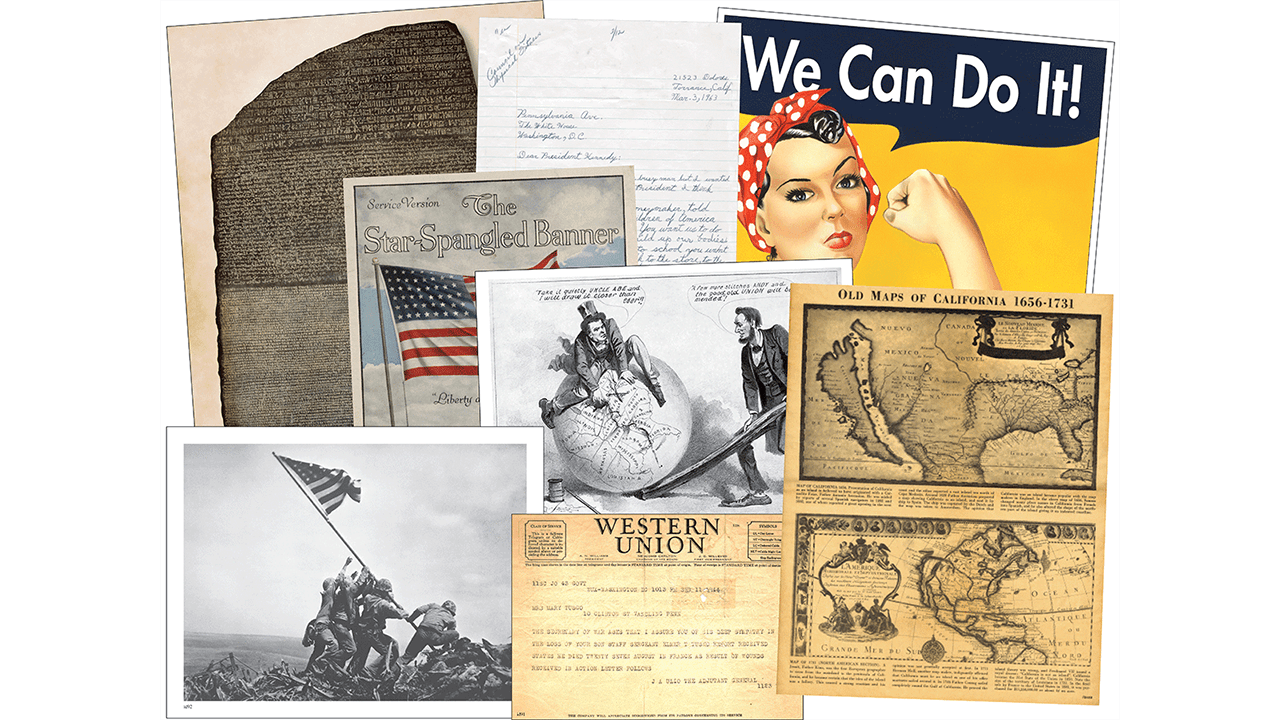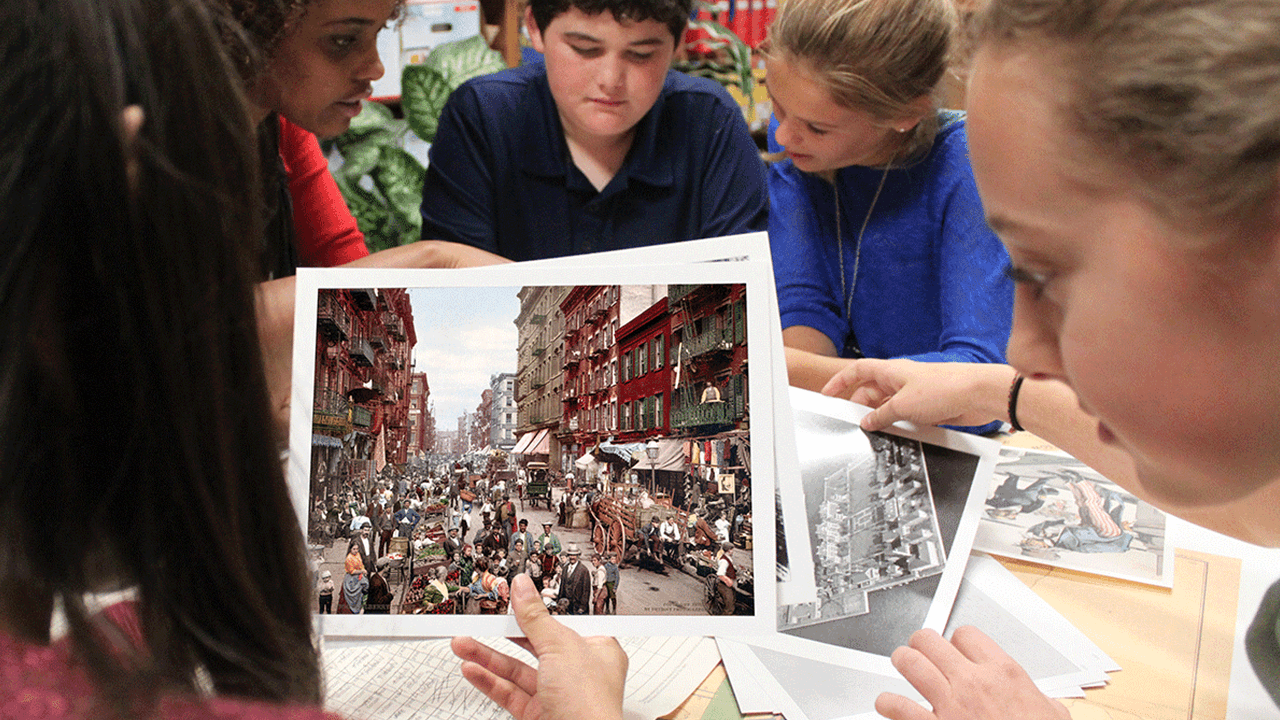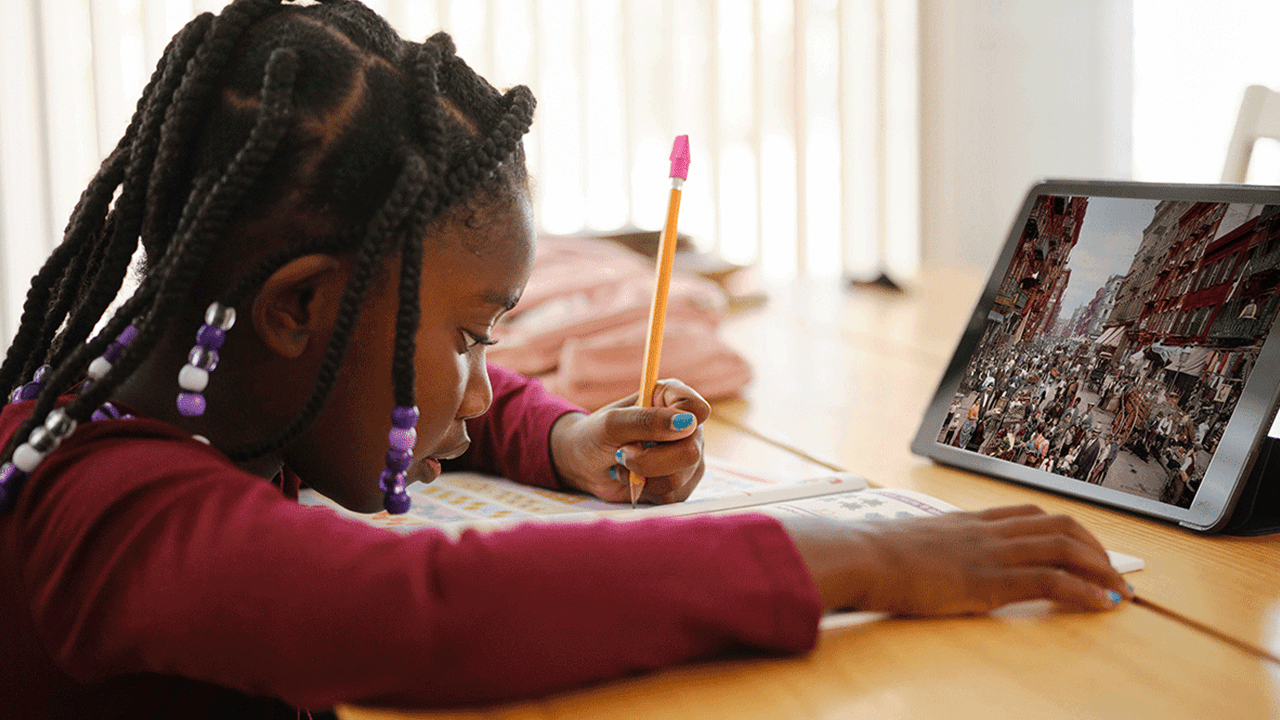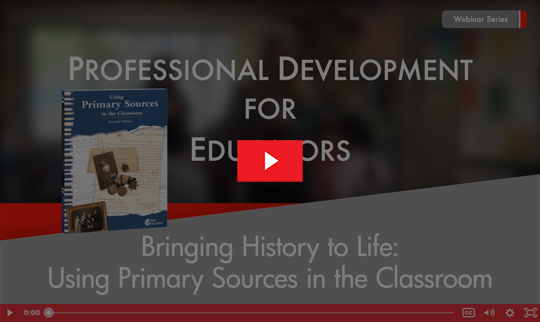Bring History to Life with Primary Sources in the Classroom
Primary sources, the raw materials of history instruction, support teachers in bringing history to life for students. In this article, you’ll learn simple strategies for supplementing or replacing textbooks with super-engaging primary sources, and have the chance to access free resources to support you in finding and using primary sources to enliven the study of history.
The Challenge of Textbooks
Entering the study of history, students often are faced with challenging texts, difficult writing prompts, and discussions led by passionate educators. Ensuring that this seems relevant, exciting, and worthwhile can be a hefty challenge for educators. Textbooks and other materials are often dense. And while they are full of photographs, queries, and depictions of historical times, they often lack authentic opportunities for students to dig into the human connection that history provides.
Teachers who understand the importance of developing an authentic connection to history and developing a well-rounded understanding of history that lays out a desire to continuously inquire and develop further understanding look to provide students with ample opportunities to investigate. Often this investigation includes the active exploration of primary sources.
What is a primary source?

Primary sources are the raw materials of history. They are first-hand accounts of an event or moment in time. Primary sources can be photographs, cartoons, love letters, declarations, artifacts, diaries, maps, and music. These sources were created by people or groups involved in the time period or event.
Why use primary sources?
Primary sources help bring history to life for students. They provide enhanced awareness and understanding coupled with multiple perspectives. Primary sources allow students to experience history. Primary sources:
- provide practice for 21st century skills
- provide a human account of events from those who were present
- provide varying perspectives that allow students to discern viewpoints
- allow students to interpret and evaluate evidence to draw conclusions
- enhance the skills of analyzing and evaluating as students consider bias and contradictions
- develop dexterity in discussions and debates.
Where might I find primary sources?

Of course, primary sources are discoverable in museums, archives, government offices, and library collections. However, accessing them for classroom use doesn’t take Herculean efforts and Sunday afternoon trips to beg curators for access. Rather, educators can find excellent resources for primary sources accessible through a range of online platforms. In discovering the primary sources, it is imperative to remember that each primary source is disconnected from other learning and students will need support through rich texts and instruction to make logical connections, to ask questions, and to make determinations about what they discover through primary sources.
Peruse a wide range of primary source resources available through Teacher Created Materials. These curated primary sources and accompanying lesson plans provide rigorous structure to instruction using primary sources. Each kit contains primary sources across a range of mediums, including some reproductions and photographs. The lesson plans provide students with supporting background knowledge and connections and opportunities to develop deep understanding and discover multiple perspectives. This access to primary sources allows teachers to bring museum experiences into the classroom.
Strategies for Engaging with Primary Sources
Here are some strategies to incorporate primary sources into your study of history. Each suggestion or activity will help you in bringing history alive for your students.

Dig in Deeper (Using a primary source photograph)
Using a primary source photograph, plan to share the photograph with students several times during one lesson plan. Allow students to quickly examine the primary source. Ask students to collect their observations. Use question stems such as: What do you notice? What do you see? What is there?
Share Observations
Provide an opportunity for students to share observations with their peers. Use a strategy like, “Everybody Shares” where all students can post their observations on chart paper or on an online platform.
Look Again
Show the primary source again. Provide students with a focus for this observation. You may direct students to notice the individuals, the setting, the actions, and soon. Use question stems such as: Who is in this photograph? What are they doing? How are they interacting?
Showcase New Findings
Provide an opportunity for students to engage in quick conversations to showcase their new findings. Use a strategy such as “merry-go-round,” allowing students to work with small groups sharing their different ideas and garnering additional noticings from their peers.
Direct Questions
Show the primary source another time with a very direct question, that collates their noticing to make an inference or realization. Use question stems such as: Why do the…? How did…? What made…?
Compare/Contrast
Provide an opportunity for students to discuss and compare or contrast their findings with their peers. Further instruction by creating sharable findings, organizing findings, and debating understandings. Students can continue to demonstrate their learning through writing or creation.
The Benefits of Primary Sources
Primary sources can be used to support learning using secondary sources. They can enhance understanding, provide varying perspectives, and corroborate learning from text. They can also be used to inspire considerations and implications of the historical times they are from. Students can brainstorm dialogue, consider emotion, and connect to other times. With the focus on allowing students to think past the main idea, students can truly discover and consider. Primary sources invite discussions and debates. Conversations born from the study and examination of primary sources can be lively, powerful opportunities for students to use evidence, question findings, and debate assumptions.
There are many kinds of primary sources, and many benefits in incorporating primary sources to bring history to life for students. Primary sources are powerful tools that help students connect with other times and people, invite discussion and debate, consider evidence, and so much more.
Bringing History to Life: Using Primary Sources in the Classroom
Dive deep into primary sources. In this on-demand webinar, participants will understand the value and contribution of primary sources to historical dialogue as well as the range of strategies needed to support this conversation to ensure that instruction is meaningful and relevant for students.
Author Bio:
View All AuthorsJen Jump, Academic Officer
As an Academic Officer, Jen Jump provides professional development and training on TCM curriculum materials and Shell Education professional resources for districts, teachers, and educational trainers. She is a passionate educator who has spent 15 years in various roles dedicated to student achievement. Before joining TCM, she contributed curriculum and professional development support to the fastest-growing urban school district, the public school system in Washington D.C. She led the...
Join the TCM Blog Community
Subscribe by sharing your email address and we will share new posts, helpful resources and special offers on the issues and topics that matter to you and the children and teens you support.

